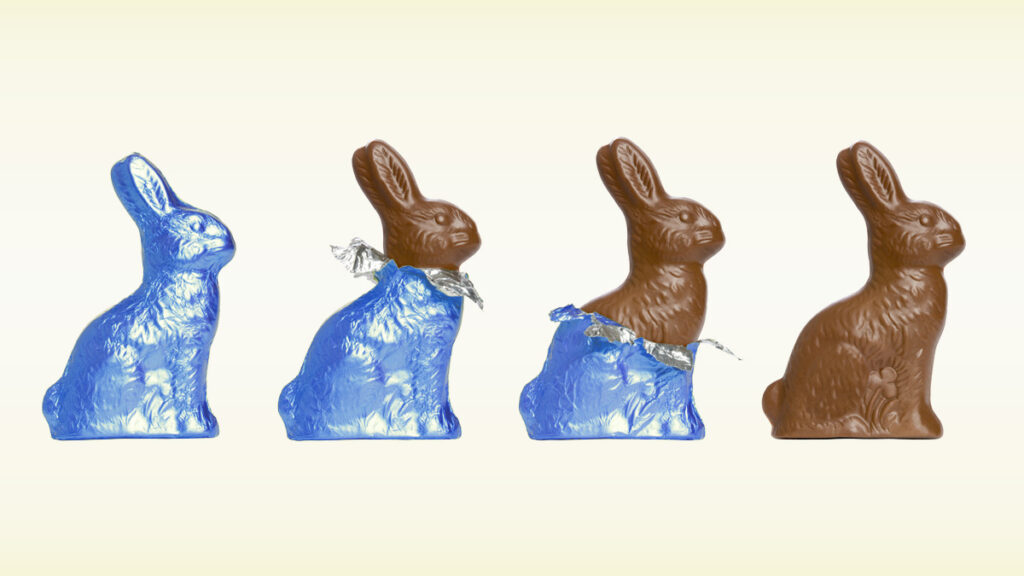By Brian Boone
There are many traditions associated with the Easter season, but one of the most interesting, and certainly the tastiest, is the candy unique to this time of year. Grab your basket and help us find these Easter egg-shaped trivia about Easter candy.
Peeps
In the first half of the 20th century, the tiny, Pennsylvania-based Rodda Candy Company made an Easter treat: marshmallow chicks colored yellow and formed by hand. The labor involved — one chick took 27 hours to build — made them very expensive and distribution confined to the northeastern U.S. But in 1953, candymaker Sam Born bought Rodda, renamed it Just Born, and immediately introduced automation and factory techniques to scale up production on the marshmallow chicks, which the new boss renamed Peeps. Nowadays, the Peeps factory in Bethlehem, Pennsylvania, cranks out four million a day. In 1973, Just Born added bunnies to the line and introduced pink and white colors in 1995.
Cadbury Crème Eggs
John Cadbury helped popularized chocolate in England when he opened a shop in Birmingham in 1824 that sold coffee and cocoa. Cadbury was so successful that by 1831, he opened a chocolate factory to supply his stores with drinking chocolate. Cadbury competitor Joseph Fry developed moldable chocolate in the 1840s, triggering Cadbury to make hardened chocolate in bars and other shapes, and in 1875, the company began making Easter candy — chocolate shape eggs filled with various other candies, including sweetened crème, but only after merging with Fry. The Cadbury Crème Egg — a chocolate “shell” stuffed with a sugary, gooey confection that was colored to resemble an egg white and yolk — didn’t hit stores until 1963.
Get Uncle John's Action-Packed Bathroom Reader Today!
Chocolate bunnies
For centuries, German folklore and mythology used bunnies as to symbolize fertility, which falls right in with the themes of rebirth and newness associated with spring as well as the Christian holiday of Easter. That all led to the idea of the Easter Bunny, and then the creation of chocolate bunnies as a special Easter treat given out to children. Small chocolatiers in Germany began making them in the mid-19th century, and German immigrants brought the idea to the U.S. In 1890, chocolate bunnies began its rise to the top of the Easter basket with an audacious publicity stunt. Robert Strohecker ran a drug and variety store in Reading, Pennsylvania, and to promote the Easter candy (like chocolate bunnies) on sale inside, he commissioned the construction of a five-foot-tall rabbit made of chocolate.









